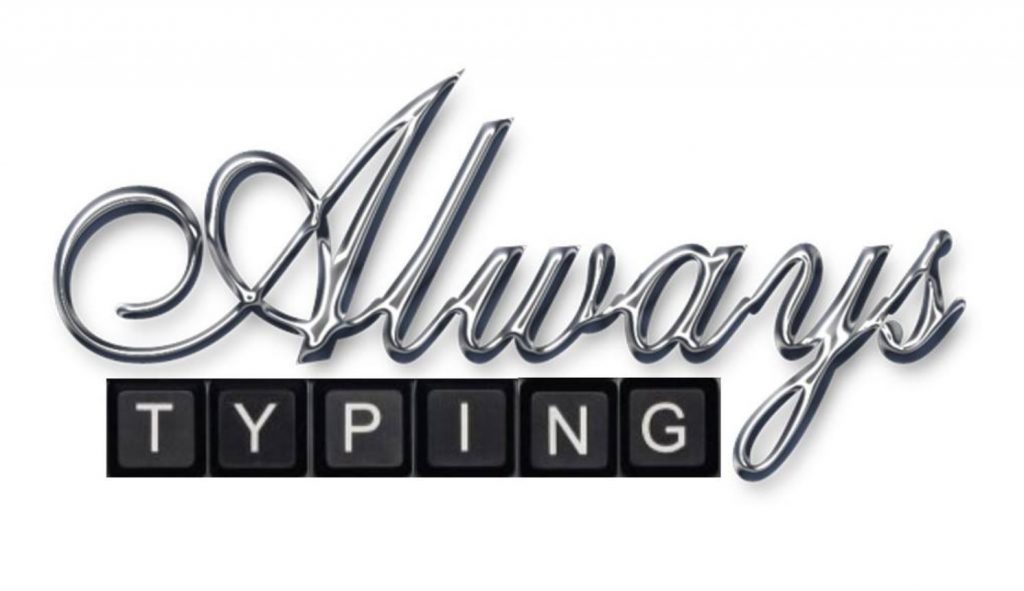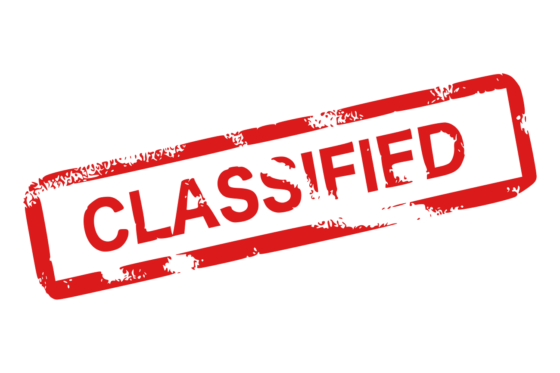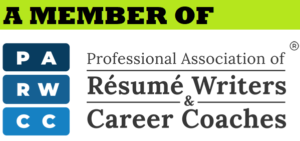The recent wave of federal layoffs has created uncertainty for thousands of government employees. With shifting political priorities, restructuring, and an increased focus on government efficiency, many workers are now facing the reality of transitioning out of federal employment. Unlike past layoffs, these changes are happening on a larger scale and with different economic conditions, making it critical for affected employees to understand their next steps. If you’re a federal employee impacted by these changes, you might be wondering: What does the future hold? Where are my best job opportunities? How do I make myself competitive in today’s job market? This guide will help you navigate the current landscape and position yourself for success in the private sector or other employment opportunities. Understanding the Federal Layoffs The recent federal layoffs have significantly impacted the landscape of government employment, leading to widespread uncertainty among federal workers. To navigate this challenging environment, it’s essential to grasp the underlying causes, the scope of affected positions, and the broader implications for the public sector. Causes of the Federal Layoffs Several key factors have contributed to the current wave of federal layoffs: Budgetary Constraints and Policy Shifts: The administration’s emphasis on reducing government spending has led to substantial budget cuts across various federal agencies. This fiscal tightening aligns with policy shifts aimed at decreasing the federal workforce and reallocating resources to other priorities. For instance, the Department of Education has faced significant staff reductions, resulting in the termination of numerous research programs and the wastage of years of work and millions of dollars. Agency Restructuring and Efficiency Measures: Initiatives to streamline government operations have prompted agencies to restructure, often leading to workforce reductions. The Department of Government Efficiency (DOGE), led by Elon Musk, has been instrumental in these efforts, targeting a 25% reduction in federal real estate and associated personnel. Elimination of Specific Departments: In some cases, entire departments have been targeted for closure to decentralize control and return authority to the states. Notably, the administration announced plans to shut down the Department of Education, aiming to delegate education authority back to the states while maintaining essential services. Impacted Agencies and Positions The layoffs have not been uniform across the federal government; certain agencies and positions have been more affected than others: Department of Education: Facing plans to eliminate nearly half its workforce, the Department has seen the cancellation of over 160 research contracts valued at $900 million, severely impacting educational research efforts. Department of Veterans Affairs (VA): Proposed budget cuts could result in the reduction of up to 80,000 employees, raising concerns about the quality of services provided to veterans. Probationary Employees: Individuals with less than a year of service, lacking full civil service protections, have been particularly vulnerable. As of February 2025, approximately 30,000 such workers had been laid off or fired, with several lawsuits alleging the dismissals were illegal. Diversity and Inclusion Programs: Executive orders eliminating diversity initiatives have led to the suspension of funding for related programs, termination of probationary employees, and closure of diversity offices within agencies like NASA, affecting the space science community. Broader Implications The ramifications of these layoffs extend beyond the immediate loss of employment: Service Delivery: Significant staff reductions threaten the capacity of federal agencies to effectively serve the public. For example, cuts at the VA have raised alarms about delayed patient care and inadequate oversight, prompting demands for the reversal of these decisions. Economic Ripple Effects: Widespread layoffs can lead to reduced consumer spending, potentially dampening economic growth. While the overall labor market remains healthy, with low unemployment rates, the long-term effects of federal job cuts on the economy warrant close monitoring. Legal Challenges and Reinstatements: The swift execution of layoffs has led to complex legal battles. Courts have ordered the temporary reinstatement of thousands of fired federal employees, complicating the administration’s efforts to reduce the workforce. Understanding these facets of the federal layoffs is crucial for affected employees as they navigate their career transitions and for stakeholders assessing the future of public sector employment. How Federal Employees Can Successfully Move from Public Sector to Private After a Layoff Despite layoffs, many industries are eager to hire professionals with federal experience. Here are some of the best career paths for displaced government employees: 1. Government Contracting & Consulting Major consulting firms like Deloitte, Booz Allen Hamilton, and Accenture actively hire former government employees. Private defense contractors, including Lockheed Martin and Northrop Grumman, need professionals with federal expertise. 2. Private Sector Policy & Compliance Roles Companies need regulatory compliance experts to help them navigate federal and state regulations. Risk management and legal compliance positions are in high demand in industries like finance, healthcare, and energy. 3. Technology & Cybersecurity The cybersecurity sector is experiencing explosive growth, with a strong need for professionals familiar with government security protocols. Former federal IT professionals can find opportunities at companies like Amazon Web Services (AWS), Microsoft, and Palantir. 4. Healthcare Administration & Policy Organizations like hospitals, pharmaceutical companies, and health policy think tanks value professionals with government health policy experience. 5. Nonprofits & International Organizations Many former federal employees find meaningful careers at organizations like the United Nations, World Bank, and international NGOs. Resume Strategies for Moving from Public Sector to Private Sector Jobs Making the Transition: Why Your Federal Resume Won’t Work in the Private Sector One of the hardest adjustments for federal employees transitioning into private-sector jobs is rethinking their resume. Many government professionals are used to long, highly detailed federal resumes—sometimes stretching five or more pages—filled with job descriptions, references, salary history, and even supervisor names. In contrast, private-sector hiring managers spend an average of six to seven seconds scanning a resume before deciding whether to read further. That’s right—mere seconds. Always Typing Resumes recently worked with a former federal employee who had spent years in government service and was applying to private-sector jobs for the first time. After their federal resume was written into a concise, two-page format optimized for corporate hiring managers, they sent it
The Biggest Resume Mistakes Former Government Employees Make (And How to Avoid Them)
Transitioning from a government job to the private sector requires more than just a career shift—it demands a resume transformation. Federal resumes follow strict guidelines, but private-sector employers expect concise, impact-driven documents. If you’re struggling to land interviews after leaving the public sector, your resume may be the culprit. Here are the biggest mistakes former government employees make on their resumes—and how to fix them. 1. Using a Long, Overly Detailed Resume 🔴 The Mistake: Federal resumes often run 4-6 pages or more, detailing every aspect of a position. Private-sector recruiters, however, expect a resume that’s 1-2 pages long and easy to scan. ✅ The Fix: Trim unnecessary details and focus on achievements rather than job duties. Use bullet points to highlight measurable results (e.g., “Implemented a cost-saving initiative that reduced expenses by 20%”). Related Reading: A Guide On When to Use a Two-Page Resume and A Guide On When to Use a One-Page Resume 2. Sticking to Government Jargon 🔴 The Mistake: Many former federal employees unknowingly fill their resumes with acronyms and government-specific terminology (e.g., “GS-14, FOIA, SES, FAR”). ✅ The Fix: Translate government experience into business language. For example: Instead of: “Managed compliance with FAR and DFARS regulations.” Use: “Ensured company-wide regulatory compliance and risk mitigation.” Related reading: How to Transition from Public Sector to Private Sector Jobs 3. Focusing on Responsibilities Instead of Achievements 🔴 The Mistake: Government job descriptions emphasize responsibilities rather than results, making resumes read like a list of duties instead of accomplishments. ✅ The Fix: Use quantifiable metrics to demonstrate success. For example: Before: “Responsible for overseeing a team handling procurement contracts.” After: “Led a team of 10, managing $5M in procurement contracts and reducing processing time by 30%.” Related reading: 100+ Powerful Achievement Statements to Transform Your Resume and Get Noticed 4. Not Tailoring the Resume to the Job Posting 🔴 The Mistake: Many government employees submit the same resume to every job application without customizing it to fit the role. ✅ The Fix: Read job descriptions carefully and incorporate relevant keywords from the listing. Align your skills with the employer’s needs and highlight specific experience that matches the job requirements. Related reading: How to tailor your resume to different jobs 5. Listing Security Clearances and Irrelevant Details 🔴 The Mistake: While a security clearance is valuable in government roles, it may not be relevant to private-sector employers—unless applying to a defense contractor or related industry. ✅ The Fix: Only include a clearance if it adds value to the position. Instead, emphasize transferable skills like leadership, project management, and problem-solving. Related reading: Use Soft Skills on Your Resume to Land Interviews 6. Using an Outdated Resume Format 🔴 The Mistake: Federal resumes often include old-fashioned elements like “Objective Statements” and extensive job history dating back 20+ years. ✅ The Fix: Use a modern resume format with a professional summary instead of an objective. Focus on the last 10-15 years of experience, unless earlier roles are highly relevant. Related reading: The reverse chronological resume is the best format for landing your dream job 7. Not Highlighting Soft Skills 🔴 The Mistake: Federal employees often rely on technical skills, failing to showcase leadership, adaptability, and communication abilities. ✅ The Fix: Integrate soft skills into work experience bullet points. For example: “Collaborated across departments to streamline operations, improving efficiency by 25%.” “Led a cross-functional team through a major organizational change, increasing productivity.” Related reading: Hard Skills vs. Soft Skills: How to Measure and Use Each 8. Skipping LinkedIn Optimization 🔴 The Mistake: Many government employees neglect LinkedIn or don’t align their profile with their resume. ✅ The Fix: Ensure your LinkedIn profile matches your resume and contains keywords relevant to private-sector roles. Regularly engage with industry professionals and recruiters. Related reading: Do I Need a LinkedIn Profile? Yes, You Do! 9. Failing to Quantify Experience 🔴 The Mistake: Government resumes often lack hard numbers, making it difficult for employers to see the impact of your work. ✅ The Fix: Use quantifiable achievements wherever possible, such as: “Managed a $2M budget, cutting operational costs by 15%.” “Increased department efficiency by 40% by implementing new workflow automation.” Related reading: How to Use the STAR Method in Resumes 10. Ignoring the Importance of a Strong Cover Letter 🔴 The Mistake: Many applicants submit generic cover letters—or none at all. ✅ The Fix: Write a customized, compelling cover letter that explains why you’re transitioning to the private sector and how your skills align with the job. Related reading: What should a great cover letter look like? Get Your Resume Private-Sector Ready If you’ve spent years in government service, shifting to a private-sector mindset—and resume—can feel overwhelming. By avoiding these common mistakes and following best practices, you’ll increase your chances of landing interviews and securing your next career opportunity. 💼 Need expert resume help? We specialize in helping former government employees transition to the private sector with professional resume writing services. Contact us today! 🚀 Ready to transform your resume and stand out to employers? Let us help! Our professional resume writing services will ensure your achievements are presented in the best possible light, so you win a coveted interview. Of course, if you’re not quite ready to commit, you can try our free resume review to get personalized feedback and quick tips to strengthen your resume. Take the next step toward landing your dream job today! Free Resume Review
Why You Struggle to Define Your Career Path and How to Overcome It
Choosing a career path is one of the most significant decisions you’ll ever make. It’s the foundation for your future, yet for many recent graduates and early-career professionals, this choice can be incredibly challenging. You might feel lost, overwhelmed, or unsure about which direction to take. The good news is, you’re not alone. Many people struggle to choose their career path, and it’s okay to feel out of sorts. In this article, we’ll explore why this struggle exists, offer tips to help you overcome it, and guide you on what to do once you find your niche. Understanding the Struggle to Define a Career Path Finding the right career path isn’t always straightforward. You might have been told that you can do anything, but with so many options, choosing one can feel overwhelming. The struggle often stems from a combination of internal and external factors. One of the biggest challenges is the sheer number of options available. With so many potential careers to choose from, it’s easy to feel paralyzed by the decision. Additionally, if you haven’t had much work experience, it can be difficult to know what you’re good at or what you might enjoy. This lack of self-awareness can make the decision even harder. Societal Pressure and Expectations Society, including family, friends, and even social media, can significantly influence your career choices. You might feel pressured to pursue a particular path because it’s considered prestigious or because it’s what your parents want. However, choosing a career based on others’ expectations can lead to dissatisfaction and burnout. The myth of the “perfect job” also adds to the pressure. Many people believe there’s one ideal job out there that’s perfectly suited for them. This belief can make it even harder to make a decision because you’re constantly searching for that elusive perfect fit. The Fear of Making the Wrong Choice Fear is another major factor that holds people back from choosing a career path. You might worry about making the wrong choice and ending up in a job you hate. This fear can lead to analysis paralysis, where you overthink every option and struggle to make a decision. Remember, no choice is set in stone. It’s okay to change direction if something doesn’t work out. The Role of Self-Discovery in Career Choice Before you can choose a career, you need to know yourself. Self-discovery is a critical part of defining your career path. It involves understanding your interests, strengths, and values. What are you passionate about? What do you enjoy doing in your free time? What are your natural talents? Personality tests, like the Myers-Briggs Type Indicator or the Holland Code, can help you gain insight into your preferences and strengths. Reflecting on past experiences and feedback from others can also provide valuable clues about what career might suit you best. The Impact of Limited Experience When you’re just starting out, you might not have a lot of work experience to guide your career choice. This lack of experience can limit your understanding of different industries and roles, making it harder to choose a path. One way to overcome this is by gaining experience through internships, part-time jobs, or volunteer work. These opportunities allow you to explore different fields, develop new skills, and get a feel for what you might like or dislike. The more you experience, the easier it becomes to define your career path. The Problem with Following Trends It’s easy to get caught up in following trends, especially when everyone seems to be pursuing the same “hot” careers. However, just because a career is popular doesn’t mean it’s right for you. Chasing trends can lead to dissatisfaction, especially if you choose a career solely for its perceived prestige or earning potential. It’s important to consider what will make you happy and fulfilled in the long term, rather than just what’s trendy right now. A career that aligns with your values and interests is more likely to bring you long-term satisfaction. Why Career Path Choices Aren’t Permanent One of the most liberating realizations is that your career choice doesn’t have to be permanent. The job market is constantly evolving, and many people change careers multiple times throughout their lives. What matters most is gaining transferable skills and staying adaptable. If you start in one field and later realize it’s not the right fit, it’s okay to pivot. Many skills, like communication, problem-solving, and teamwork, are valuable in a wide range of careers. Embracing change and being open to new opportunities can lead to a more fulfilling career. Steps to Overcome the Struggle If you’re struggling to define your career path, there are several steps you can take to gain clarity. Self-Reflection and Journaling: Take time to reflect on your interests, strengths, and values. Journaling can help you organize your thoughts and identify patterns in what you enjoy doing. Seek Mentorship and Advice: Talk to people who are already working in fields you’re interested in. They can offer valuable insights and advice based on their experiences. Take Career Assessments: Consider taking career assessments or personality tests to gain a better understanding of your strengths and potential career matches. Exploring Career Options Once you’ve gained some self-awareness, the next step is to explore different career options. Start by researching industries and roles that interest you. Look into the day-to-day responsibilities, required skills, and potential career growth. Conducting informational interviews is another excellent way to learn about different careers. Reach out to professionals in your network or on LinkedIn and ask if they’d be willing to share their experiences. These conversations can provide valuable insights that you won’t find in a job description. Building Experience While Deciding While you’re still figuring out your career path, it’s important to gain experience. Internships, part-time jobs, and volunteering are all great ways to build your resume and develop new skills. These experiences can also help you determine whether a particular field is right for you. Gaining experience doesn’t just make you more marketable
Navigating Security Clearance: An Introductory Guide for Your Career
Getting security clearance for your job might seem complicated. But don’t worry; this guide is here to help you understand the basics. Whether you’re just starting to apply for a job that needs security clearance or you want to know more about it, this guide gives you a simple overview of what you need to know. Understanding Security Clearance and Why It Matters The whole idea of security clearance can be a bit puzzling, and you might wonder why it’s such a big deal. Well, if you’re aiming for a job that requires security clearance, it’s vital to get the hang of it. Getting a security clearance matters for several important reasons: Access to Classified Information: Security clearance is a prerequisite for accessing classified or sensitive information. Many government agencies and organizations deal with confidential data related to national security, defense, intelligence, and more. Having a security clearance demonstrates that you can be trusted with this sensitive information. Job Requirements: Some jobs, especially those in government, defense, intelligence, or roles involving critical infrastructure, mandate security clearance as a job requirement. Without it, you may not be eligible for these positions. Career Opportunities: Having security clearance can open doors to a wide range of career opportunities in both the public and private sectors. Jobs that require security clearance often come with competitive salaries and benefits. National Security: Security clearances help ensure that individuals working in sensitive roles are loyal, trustworthy, and reliable. This safeguards national security interests by reducing the risk of espionage, leaks, or unauthorized access to classified information. International Travel and Collaboration: Security-cleared individuals may be required to collaborate with international partners or travel to secure locations. Security clearance facilitates international cooperation and ensures that classified information is handled appropriately. Personal and Professional Growth: Obtaining and maintaining security clearance can be a mark of professional achievement and integrity. It demonstrates your commitment to upholding the highest standards of ethics and trustworthiness. Understanding the Spectrum of Clearance Levels Security clearance isn’t a one-size-fits-all credential; it encompasses three distinct levels, each tailored to the specific responsibilities and duties they entail: Confidential: This is the lowest level, used for less sensitive jobs. Secret: A bit more serious, this is for jobs with somewhat sensitive information. Top Secret: The highest level, for very important jobs dealing with super sensitive stuff. Keeping Tabs with Periodic Reinvestigations For jobs requiring Secret or Top Secret clearance, HR doesn’t just grant it and forget about it. They periodically check to make sure you’re still a good fit for the clearance. Here’s how it works: Background Rechecks: HR may revisit your background to see if anything has changed since you first got clearance. They want to ensure you’re still trustworthy. Interviews and Updates: Sometimes, they’ll talk to people who know you, like friends or coworkers, to make sure you’re still dependable and haven’t gotten involved in anything risky. Ongoing Evaluation: HR keeps an eye on your conduct, both at work and in your personal life, to ensure you’re maintaining the level of integrity required for your clearance. This periodic check-up is all about making sure that as circumstances change, your clearance still aligns with your role. It’s like a safety net to protect sensitive information and maintain national security. Evaluating the Factors Influencing Your Security Clearance Gaining security clearance isn’t just a procedural formality; it involves a meticulous assessment of various factors, including: Your Character: They want to know if you’re a stable, trustworthy, reliable, and honest person. They check if you make good decisions and stay loyal to the United States. Background Checks: They dig into your past to see if there’s anything that might raise concerns. They talk to people who know you and look at your records. Fingerprint Analysis: They use your fingerprints to confirm your identity and check if you have a clean record. And here’s an important point: They don’t care about things like your race, color, religion, sex, sexual orientation, or disabilities when they decide if you can get security clearance. It’s all about your behavior and trustworthiness. How to Apply for Security Clearance When you’re all set to start your new job, you’ll need to go through a process to get security clearance. It involves a few important steps: Fill Out Forms: You’ll have to fill out a bunch of forms, sort of like paperwork. This collection of forms is often called the “security package.” Background Checks: They’ll look into your history to make sure everything checks out. This includes checking your records and talking to people who know you, like friends and coworkers. They might also use your fingerprints to double-check your identity. Interviews: You might need to chat with some people about your life and work. It’s like a friendly conversation to learn more about you. Determining Eligibility: After all these checks, they decide if you’re good to go for security clearance. It’s like getting a green light. Getting the News: If you’re eligible, they’ll let you know, so you’re in the clear to start your job. If not, they’ll tell you why. So, getting security clearance involves a bunch of steps to make sure you’re the right fit for the job. Why Some People Don’t Get Security Clearance Sometimes, people can’t get security clearance for certain reasons. Here are some common ones: Money Problems: When you’re responsible for handling sensitive information, they want to be sure you won’t be influenced by financial troubles. If you have a lot of debt or struggle to manage your finances, you might be seen as vulnerable to financial pressures. People in such situations could potentially be tempted to share secrets for financial gain or relief from their debts. So, they check to make sure you have your financial house in order. Bad Behavior: Security clearance is all about trustworthiness. If you’ve been dishonest in the past, especially when it comes to important things like filling out forms truthfully, they might question whether you’re honest enough for the job. Honesty is crucial
Global Employment: Resumes and CVs Across Different Parts of the World
In an increasingly interconnected world, the pursuit of work opportunities beyond one’s home country has become a common aspiration for many professionals. Whether it’s the allure of exploring new cultures, seeking better job prospects, or simply broadening one’s horizons, the concept of finding work abroad has gained significant traction. However, this endeavor comes with its own set of challenges, including adapting to the diverse practices of crafting application documents like resumes and CVs. These documents serve as the initial gateways for individuals to secure interviews and, ultimately, their dream jobs. This article delves into the intricacies of resumes and CVs across various regions, focusing on the differences between the United States and international preferences while shedding light on why these variations exist and how they impact the global job search. Resumes vs. CVs: A global perspective The foundational distinction between resumes and CVs lies in their purpose and scope. Resumes are concise, one-to-two-page summaries of an individual’s qualifications, work experience, skills, and achievements. Their succinct nature aligns with the United States’ and other countries’ preferences for a document that swiftly highlights key competencies without delving into excessive personal details. On the other hand, CVs, short for curriculum vitae, are more extensive documents, offering an in-depth overview of a candidate’s professional and academic journey. The scope of CVs often extends beyond work experience to encompass research, academic pursuits, publications, and awards. The United States, Australia, and Canada: Resumes as legal safeguards In the United States, Australia, and Canada, the use of resumes is strongly influenced by anti-discrimination laws. These countries advocate for a streamlined approach to application documents to prevent potential biases based on personal information. Resumes adhere to a format that focuses on professional achievements, skills, and qualifications, sidelining personal attributes that might lead to unconscious biases. The resume’s brevity ensures that hiring decisions are based on merit rather than extraneous details. The UK, New Zealand, Asia, and the European Union: Embracing comprehensive CVs Conversely, countries like the United Kingdom, New Zealand, various Asian nations, and the European Union generally embrace CVs due to their comprehensive nature. These regions value a holistic understanding of a candidate’s background, appreciating the inclusion of a wide array of experiences, such as academic accomplishments, research contributions, and awards. Hiring managers across these areas seek a nuanced depiction of an applicant’s journey, enabling them to make informed decisions based on a broader spectrum of qualifications. Country-specific practices United States: Resumes are the go-to document for job applications, emphasizing qualifications and achievements. Canada: Similar to the U.S., resumes are preferred to maintain a focus on professional accomplishments. Australia: Resumes dominate the application process, ensuring equal opportunity by minimizing personal information. United Kingdom: CVs are standard, allowing candidates to provide a holistic view of their professional and academic history. New Zealand: CVs are favored for their comprehensive nature, enabling candidates to showcase a diverse range of accomplishments. European Union: CVs are widely used to present a thorough overview of a candidate’s background, including academic and research pursuits. Asia: Most Asian countries prefer CVs, valuing a comprehensive picture of a candidate’s qualifications, skills, and experiences. Craft your path forward In the pursuit of international employment opportunities, the variance in document preferences reflects a cultural interplay between professionalism, anti-discrimination measures, and the desire for comprehensive insights. The divide between resumes and CVs exemplifies the evolving landscape of global job searches, where tailored application documents align with distinct legal, cultural, and professional landscapes. As professionals continue to seek diverse career paths across the world, understanding these differences becomes pivotal in crafting impactful application materials that resonate with employers and transcend borders. Elevate Your Global Job Search with Expertly Crafted Resumes Navigating the intricacies of international employment demands a tailored approach that aligns with regional preferences. Are you ready to seize opportunities around the world? Our professional resume writing services are here to help you shine on the global stage. Unlock Your Potential: Let our experienced team create resumes that transcend borders, showcasing your qualifications and accomplishments while adhering to cultural norms and legal frameworks. Whether you’re eyeing positions in the United States, Canada, Europe, Asia, or beyond, we understand the nuances that make your application stand out. Crafted for Success: With a deep understanding of diverse industries and regions, we craft resumes that capture your unique journey, skills, and achievements. Our commitment to excellence ensures that your application materials align with the expectations of hiring managers worldwide. Secure Your Dream Job: Don’t leave your international career to chance. Join countless professionals who have unlocked opportunities with our tailored resume-writing services. Your next adventure awaits – let us help you seize it. Contact Us Today
Use Soft Skills on Your Resume to Land Interviews
When it comes to navigating the job search landscape, one universal truth stands tall: showcasing your skills that align with the job is essential. While you meticulously curate your list of hard skills, drawn from your experience and education, there’s a dimension that holds the potential to elevate your resume and secure that coveted interview—soft skills. The distinction between hard skills and soft skills often swirls in the world of resume writing. But what lies beneath these terms? How can you harness the might of soft skills to stand out and secure that crucial interview opportunity? Decoding Hard Skills and Soft Skills Your abilities honed through experience and education constitute hard skills. From conducting competitor analysis to coding new software, hard skills encompass measurable competencies. These skills boast quantifiable achievements tagged with numbers, currency symbols, or percentages. On the other hand, soft skills don’t spring from textbooks or workplaces. They mirror personality traits that enhance your professional prowess. Unlike their hard counterparts, soft skills are immeasurable and qualitative in nature. Navigating the Divide: Examples of Hard and Soft Skills Imagine a registered nurse proficiently administering an IV—that’s a hard skill. Conversely, when the same nurse compassionately educates patients about recovery expectations, that’s a soft skill. Your resume, LinkedIn profile, cover letter, and interview responses should seamlessly blend both hard and soft skills. The Ripple Effect of Soft Skills In today’s dynamic work culture, organizational ethos plays a pivotal role. Soft skills, particularly those tied to communication, social interaction, and emotional intelligence, hold tremendous sway. Employers seek candidates who mesh seamlessly with their team’s dynamics and cultural fabric. High emotional intelligence, a prized soft skill, is especially sought-after in leaders. Traits like flexibility, adaptability, empathy, self-management, and problem-solving reflect this intelligence, shaping a harmonious work environment. Flexibility and Adaptability: Navigating Changing Tides In an era where change is the new constant, adaptability and flexibility have emerged as coveted soft skills. The ability to navigate shifting landscapes has become pivotal for professionals. Empathy: The Bridge to Productive Collaboration The foundation of productive collaborations lies in empathy—a skill that fosters understanding and rapport. The more effectively you connect with your peers, the higher your productivity soars. Self-Management: Cultivating Accountability and Efficiency Self-management envelops a spectrum of attributes like accountability, transparency, time management, and organization. Displaying your capability to manage your own time effectively underscores your productivity and goal achievement. Problem-Solving: Illuminating the Path to Innovation Employers value those who can autonomously identify issues and devise solutions. Soft skills in problem-solving allow you to approach situations with fresh perspectives, enhancing processes and driving innovation. Soft Skills: The Universal Equalizer Soft skills are pertinent whether you’re stepping into your first role or boasting years of experience. A blend of soft skills can set you apart from the competition, showcasing your fit for the company and team. Consider this scenario: Every nurse is skilled in vital sign measurement. But if you’re the nurse who also possesses the ability to comfort needle-phobic patients, you’ve gained a competitive edge by showcasing a soft skill that resonates with a personal touch. Unearthing the Most Valued Soft Skills The importance of specific soft skills varies from job to job. A glance at the job description offers insights into the crucial skills employers are seeking. For example, here are some qualifications you might find for a Collections Agent position listing: Collection experience in a call center setting Strong Quality Assurance scores Excellent verbal and written communication skills Effective communication, negotiation, and problem-solving abilities Proficiency in navigating computer systems High School Diploma/ GED required Age requirement: 18 years or older Note the emphasis on communication skills—oftentimes, the linchpin of soft skills. Different roles will necessitate distinct soft skills, such as teamwork, persuasion, leadership, collaboration, and conflict resolution. Elevating Soft Skills: The Path to Enhancement While soft skills are inherently part of your personality, you can certainly enhance them: Practice: Set personal goals and practice skills that need improvement, like time management. Seek Feedback: Solicit feedback from trusted individuals on your handling of various situations. Take Courses: Online platforms like Coursera, Udemy, and LinkedIn Learning offer courses to bolster skills like creative thinking and teamwork. Emboldening Your Resume with Soft Skills Applicant Tracking Systems (ATS) aren’t solely programmed to seek technical skills—they’re on the lookout for soft skills as well. Amplifying your soft skills in your resume is essential to getting past the ATS and impressing a hiring manager. Skills Section: A Soft Skills Showcase Incorporate soft skills into your ‘Core Competencies‘ list—a succinct display of your strengths. This section’s skimmable nature ensures it passes the 6-second test. Summary Paragraph: Weaving Soft Skills into Your Narrative Your summary paragraph, akin to an elevator pitch, should seamlessly weave in your soft skills. After all, your summary is your first impression—make it resonate. Professional Experience: Infusing Soft Skills into Achievements Whether your professional experience section uses paragraphs or bullet points, you can integrate soft skills. While hard skills thrive on numbers, soft skills thrive on qualitative achievements. Beyond Buzzwords: Authentically Portraying Soft Skills Steer clear of buzzwords that diminish the impact of your soft skills. Instead of stating you’re a “hard-working team player,” illustrate your dedication through actions. Crafting a Cover Letter with Soft Skills Today, cover letters wield increased importance. They provide a platform to convey your uniqueness and soft skills authentically. The Culmination: Embrace Your Soft Skills Journey As you prepare to embark on your job search, remember to compile a comprehensive list of your skills. This roster should encompass technical skills, experience, and the invaluable soft skills that make you the remarkable professional you are. Ready to showcase your full potential? Elevate your resume with our expert assistance. Let Always Typing’s award-winning resume service help you highlight your unique soft skills and craft a winning application. Unlock interview opportunities and make your mark in the job market. Get started today! Contact Us Today








